Meet bloodstone, the ‘other’ birthstone of March
Aquamarine may be more widely known, but March babies have the luxury of two birthstone choices. Both have a historic association with protection and healing, yet they look distinctly different.
Meet bloodstone
Bloodstone, also known as the mineral aggregate heliotrope, is a cryptocrystalline mixture of quartz that is semi-translucent (chalcedony) to opaque (jasper). Traditionally, bloodstone is dark green jasper with red speckles, resembling drops of blood. This unique appearance has made it a popular choice for jewelry and decorative objects for centuries. Here are some interesting facts about the history and symbolism of this intriguing birthstone.
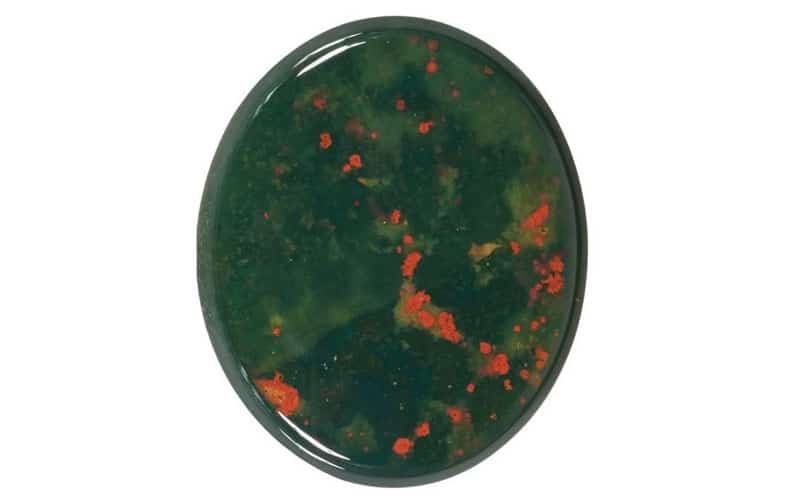
Ancient symbolism
Bloodstone has a long, fascinating history dating back to ancient times. In medieval Europe, bloodstone was thought to be a powerful protector against injury and disease, and it was used in many religious and secular contexts. The ancient Egyptians used the stone for healing, carving it into amulets and seals. The ancient Greeks also believed that bloodstone had healing powers and would wear it as a talisman to stop bleeding, as well as to protect themselves from evil spirits. The name “heliotrope” comes from the Greek words for “sun” and “turning,” describing how bloodstone’s red speckles, attributable to iron oxide, seem to turn its color toward that of the sun.
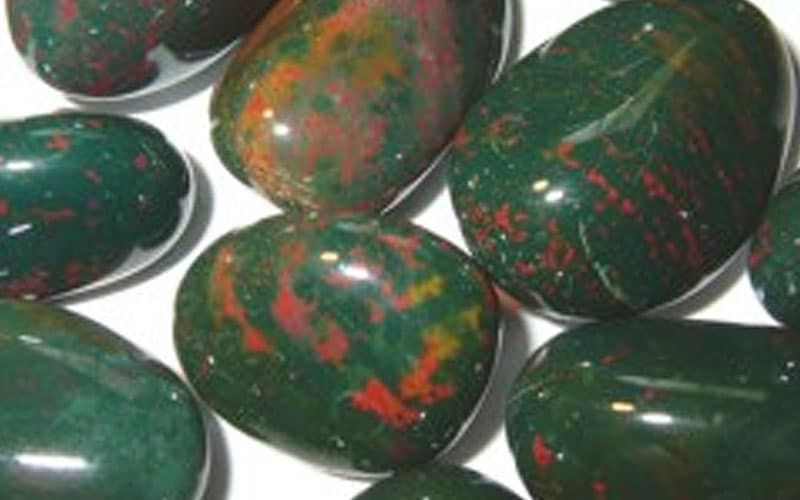
The ‘March Stone’
In ancient Rome bloodstone was declared the ‘March stone,’ due to its association with Mars, the god of war in Roman mythology. It was frequently carved into intaglio designs and used for signing important documents.

Modern uses
In addition to its healing and protective properties, bloodstone is thought to promote creativity and vitality. It is often used in modern meditation and spiritual practices to help the wearer connect with their inner wisdom and creativity. Bloodstone is associated with the earth element and is believed to promote grounding, courage, and strength.

Availability
Bloodstone is widely available and can be found in many regions around the world, including India, Brazil, Australia, and the United States. It is typically cut into cabochons or beads and used in a variety of jewelry styles, including rings, pendants, and earrings. Its durability and hardness make it an excellent choice for everyday wear.
So… Aquamarine or bloodstone?
Which would you choose, March babies? Similar symbolism but two distinctly different looks. Do you enjoy translucent, seafoam greens and blues, or bloodstone’s dark green jasper with red speckles?
(Perhaps one of each?)
Read about Aquamarine in our prior GemBlog post ‘Dear humans, you’re welcome.’

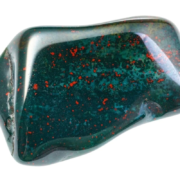
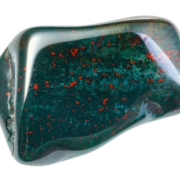
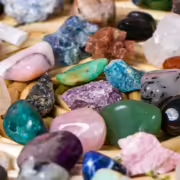


Leave a Reply
Want to join the discussion?Feel free to contribute!